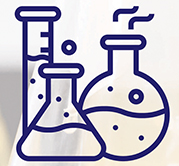From homes to hospitals, plastics are an integral part of human life. Plastic objects are often durable enough and a lot cost-effective than those made of metal and wood, which is why their usage for almost everything is rapidly increasing day by day. While the material is versatile and convenient, it also has a sinister side. It takes an eternity to decompose, while certain types of plastics don’t decompose at all, which is leading to mounting waste and pollution.
Due to the dangers of abandoned plastic to the soil and wildlife and the emission of harmful gases from its burning, the focus on reprocessing discarded plastic objects and reusing the material thus obtained is rising. P&S Intelligence says that owing to the rising awareness about plastic pollution, the plastic recycling market will grow from $41,238.8 million in 2018 to $64,139.7 million by 2024, witnessing an 8.6% CAGR during 2019–2024. The process involves segregating the different types of plastic waste and then washing, shredding, melting, and pelletizing it.
Plastic waste is sourced from wires and cables, sheets, pipes, packaging material, molded products, and other products. Presently, packaging products make up the highest volume of plastic waste being recycled, as the virgin material used for the purpose is designated for a short life. In addition, the government of several countries across the globe has implemented sustainability targets, whereby packaging firms are mandated to have a certain amount of recycled plastic material in their products.
Hence, with plastic at the center of human life and the rising awareness about the dangers of irresponsibly disposed-of or incinerated plastic on the environment, recycling efforts are set to pick up even more pace in the coming years.
Read more: https://www.psmarketresearch.com/market-analysis/plastic-recycling-market























